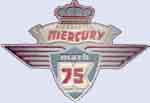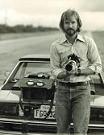Clearly he is having a problem understanding here that racers then used ideas and concepts from a myraid of other engines not necessarily racing ones, OMC ones too to look at, adapt or get their technology from. Sometimes racers also re-invented the wheel as a matter of speaking to bring something totally new out of it and sometimes got ideas and products from unrelated industries and products. There was that kind of thinking and flexability back in those days not un-unique we find today......so what are you talking about?


 Thanks:
Thanks:  Likes:
Likes: 










Bookmarks